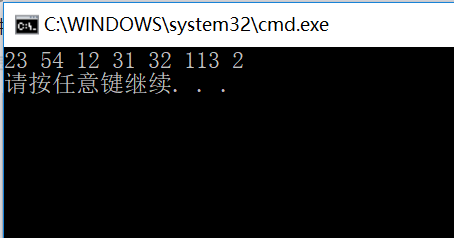C++STL 空間配置器allocator
阿新 • • 發佈:2019-02-11
先來介紹一下STL的六大元件
1. 空間配置器:記憶體池實現小塊記憶體分配,對應到設計模式--單例模式(工具類,提供服務,一個程式只需要一個空間配置器即可),享元模式(小塊記憶體統一由記憶體池進行管理)
2.迭代器:迭代器模式,模板方法
3.容器:STL的核心之一,其他元件圍繞容器進行工作:迭代器提供訪問方式,空間配置器提供容器記憶體分配,演算法對容器中資料進行處理,仿函式偽演算法提供具體的策略,型別萃取 實現對自定義型別內部型別提取。保證演算法覆蓋性。其中涉及到的設計模式:組合模式(樹形結構),門面模式(外部介面提供),介面卡模式(stack,queue通過deque適配得 到),建造者模式(不同型別樹的建立過程)。
4.型別萃取:基於範型程式設計的內部型別解析,通過typename獲取。可以獲取迭代器內部型別value_type,Poter,Reference等。
5.仿函式:一種類似於函式指標的可回撥機制,用於演算法中的決策處理。涉及:策略模式,模板方法。
6介面卡:STL中的stack,queue通過雙端佇列deque適配實現,map,set通過RB-Tree適配實現。涉及介面卡模式。
空間配置器:
一般來說,我們使用C++ new操作符主要進行兩步操作:
(1)::operator new分配記憶體
(2)呼叫建構函式構造物件
而使用C++ delete操作符主要進行兩步操作:
(1)呼叫解構函式析構物件
(2)::operator delete釋放記憶體
STL將記憶體分配與物件構造析構分開,因此空間配置器分為記憶體分配及空間初始化。
程式碼實現:
#include<iostream> #include<functional> #include<algorithm> #include<string> #include<vector> #include<map> using namespace std; // STL /* 1.一級空間配置器 2.二級空間配置器 開闢的記憶體 大於128 一級空間配置器 malloc free 二級空間配置器 記憶體池 */ /* 空間配置器 /* 1.物件的生成有幾步 1.開闢空間 operator new 2.呼叫建構函式 2.物件的銷燬 1.呼叫解構函式 2.釋放空間 operator delete */ namespace LY1206 { template<typename T> T* _allocate(ptrdiff_t size, T*) { set_new_handler(0); T* tmp = (T*)(::operator new((size_t)size*sizeof(T))); if (tmp == NULL) { cout << "out of memory!" << endl; exit(0); } return tmp; } template<typename T1, typename T2> void _construct(T1* p, const T2& value) { /* p ==> T2 */ new (p)T2(value); } template<typename T> void _deallocate(T* p) { ::operator delete(p); } template<typename T> void _destory(T* p) { p->~T(); } template<typename T> class MyAllocate { public: typedef T value_type; typedef T* pointer; typedef const T* const_pointer; typedef T& reference; typedef const T& const_reference; typedef size_t size_type; typedef ptrdiff_t difference_type; template<typename U> struct rebind { typedef MyAllocate<U> other; }; pointer allocate(size_type size, const void* hint = 0) { return _allocate(size, (pointer)0); } void deallocate(pointer p, size_type n) { _deallocate(p); } void construct(pointer p, const_reference val) { _construct(p, val); } void destory(pointer p) { _destory(p); } }; }; int main() { vector<int, LY1206::MyAllocate<int>> vec; int arr[] = { 23, 54, 12, 31, 32, 113, 2 }; int len = sizeof(arr) / sizeof(arr[0]); for (int i = 0; i < len; ++i) { vec.push_back(arr[i]); } vector<int, LY1206::MyAllocate<int>>::iterator it = vec.begin(); for (it; it != vec.end(); ++it) { cout << *it << " "; } cout << endl; return 0; }
執行結果:

